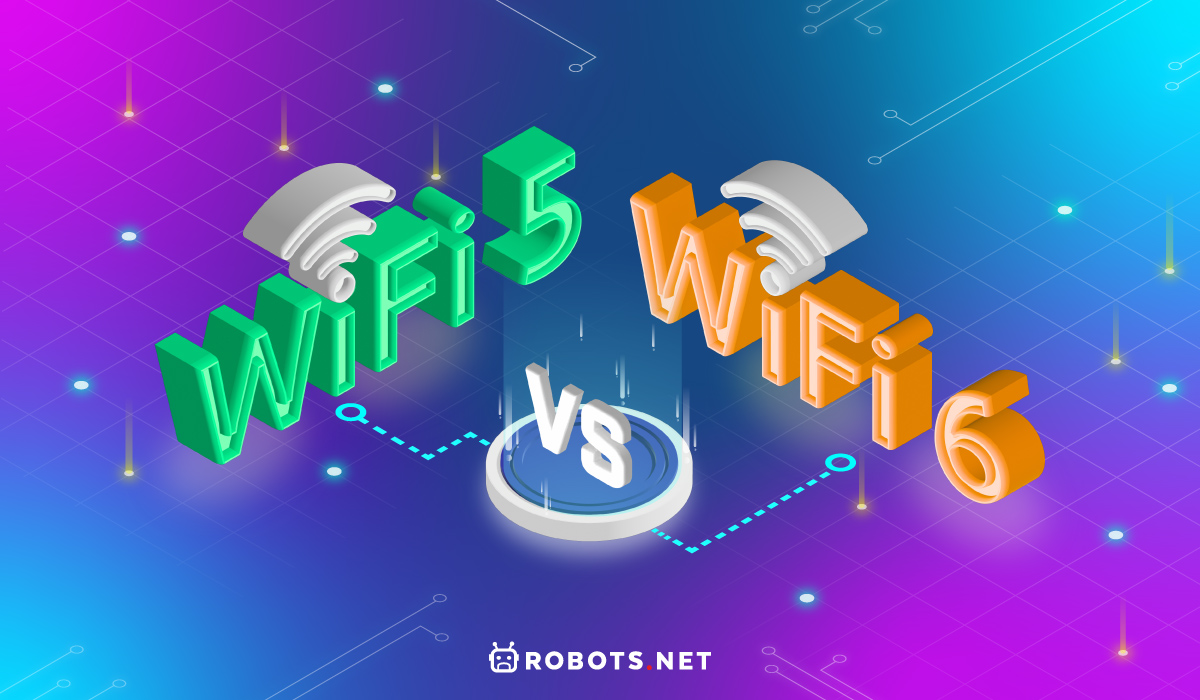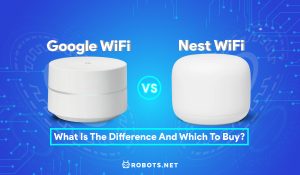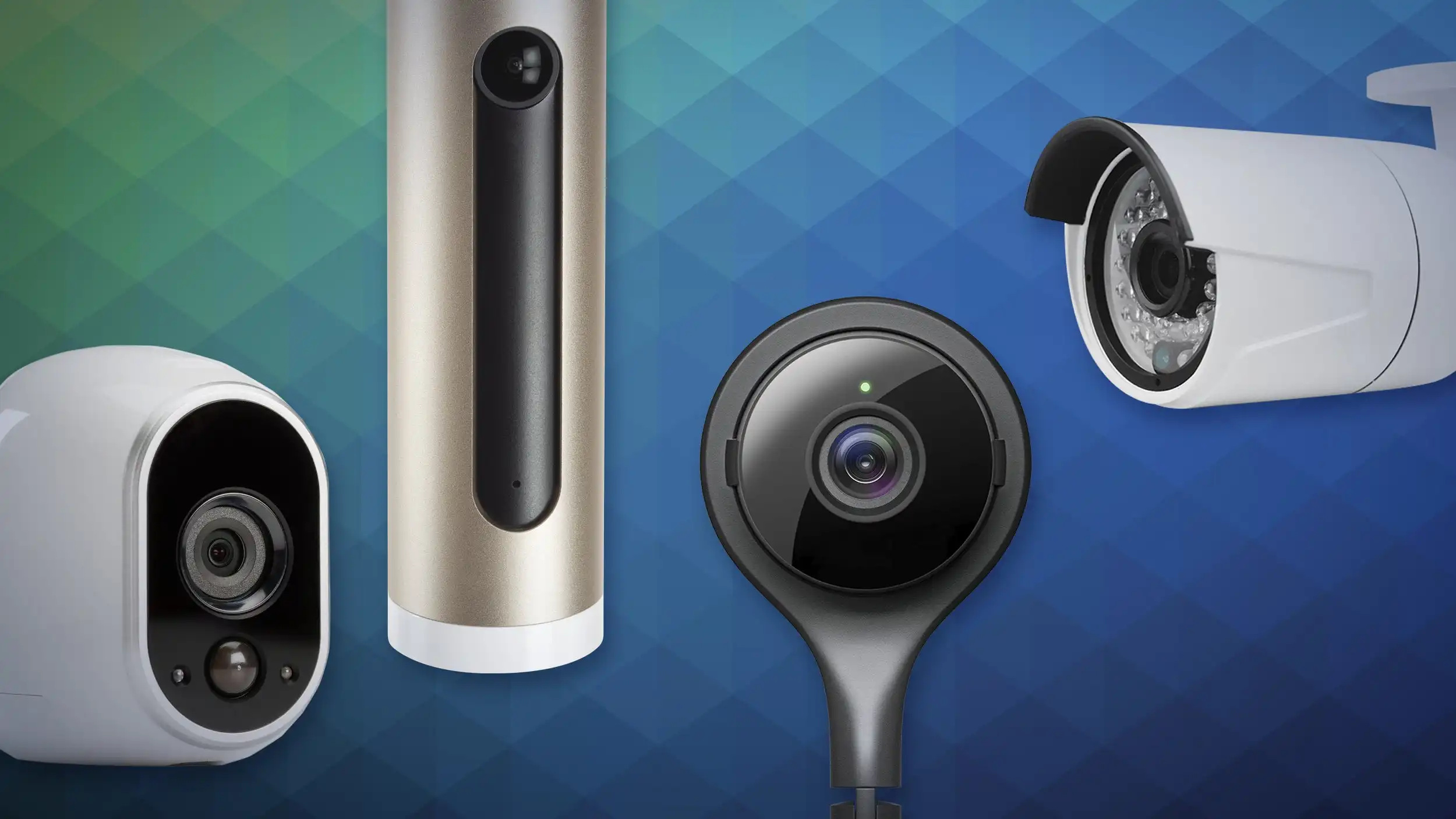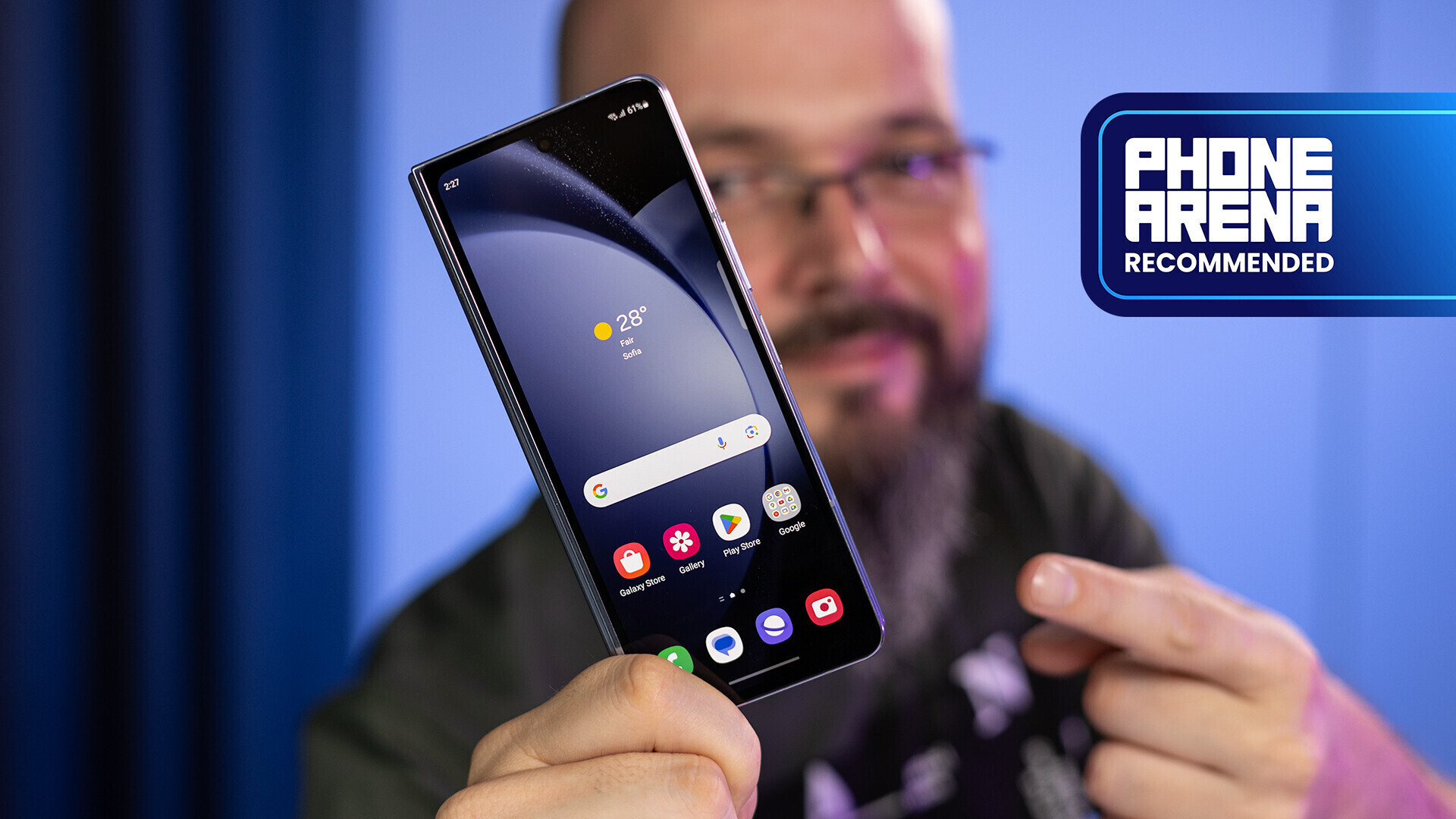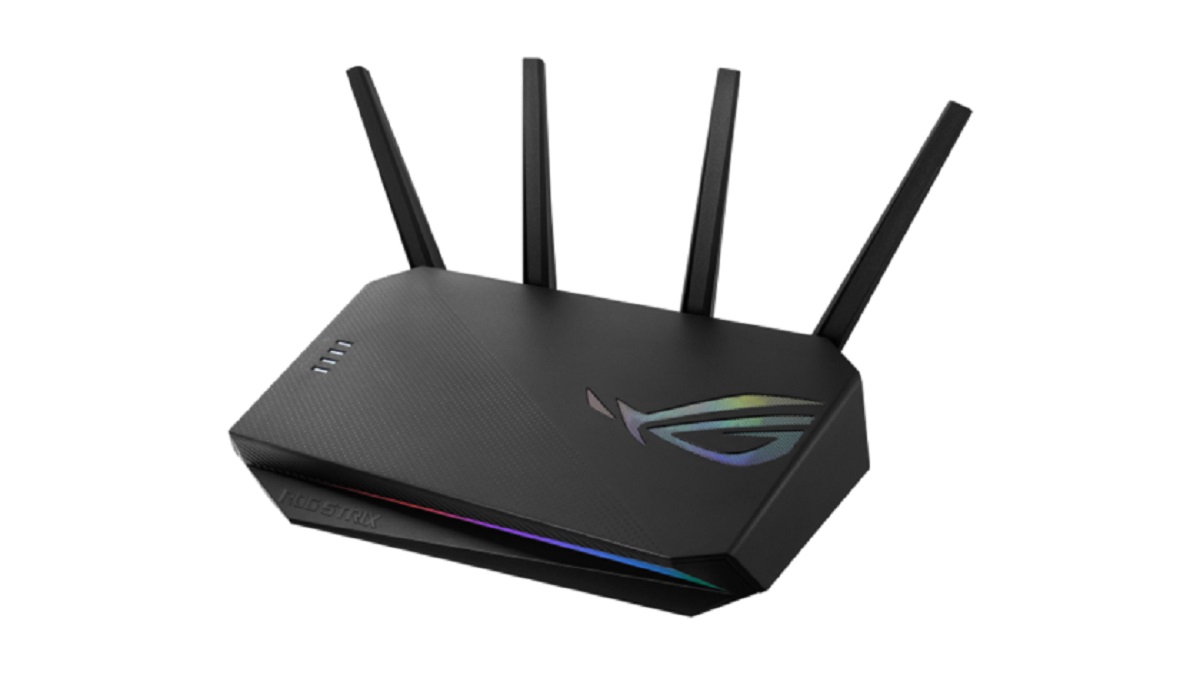If you’re like most people, you’ve probably never thought twice about your device’s WiFi generation or version. After all, the most important thing about WiFi is that you can connect to a wireless network, right? However, sometimes it does pay to learn the differences between WiFi 5 vs WiFi 6 – especially if you’re into gaming. Curious about what makes one or the other better? Let’s find out.
Main Differences: WiFi 5 vs WiFi 6
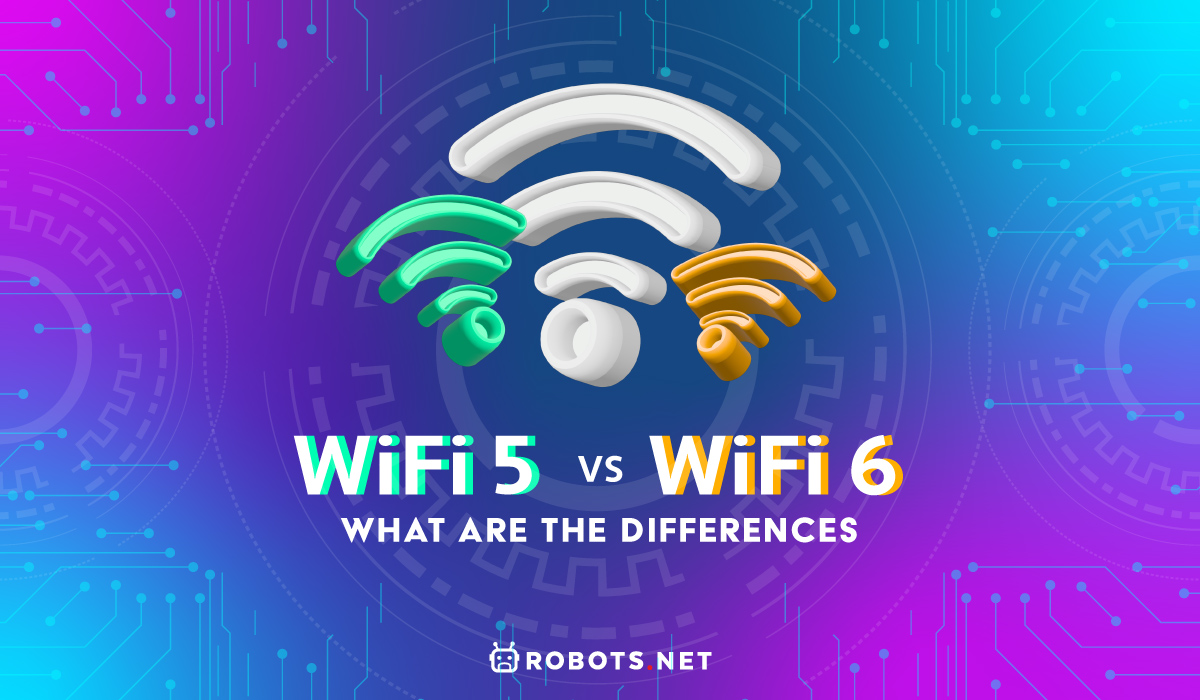

To the average person, the differences between WiFi 6 vs WiFi 5 would probably be inconsequential. However, if you’re someone who likes to make the most of your electronics, paying attention to the differences is crucial.
That’s because WiFi 6 is much faster than WiFi 5. Sure, it bases its architecture on the old 802.11ac framework. Nonetheless, because of several different advances in technology, it’s a much better performer than WiFi 5.
Apart from this, WiFi 6 also boasts several other advantages over WiFi 5. These include better connectivity in congested areas, backward compatibility, support for more devices, battery life improvements, and better data transfers.
There’s also the matter of comparing WiFi 5 vs WiFi 6 vs WiFi 6E. WiFi 6E boasts an entirely new 6 GHz broadcast band, allowing reduced congestion and fewer dropped signals. This is a breakthrough for industries that need reliable connectivity, like HD video streaming or virtual reality. It’s also a big step forward for the Internet of Things (IoT) industry, which requires a large amount of bandwidth.
What Is WiFi 5?
Before we compare WiFi 5 vs WiFi 6, it’s important to understand what both standards offer. What are their features and specs? Moreover, what makes them special and distinguished from the other WiFi generations? We’ll talk more about that below.
Specs
WiFi 5, also called 802.11ac or Gigabit WiFi, is an upgrade from its previous version, IEEE 802.11n (WiFi 4). The previous generation was a decent performer for the time. However, because it faced an increased number of users that connected to a single network, the industry needed something that could handle more connections without dropping speeds or increasing latency.
As a result, the industry created WiFi 5 which provided improved range, speed, performance, capacity, and data usage. Under the best conditions, the maximum speed WiFi 5 can reach is around 1.3 Gbps to 2.3 Gbps.
This achievement was monumental as it was the first WiFi standard that could potentially reach gigabit speeds. Moreover, it was a big step up from WiFi 4’s measly 450 Mbps maximum speed. That’s also only theoretical, as WiFi 4’s maximum real-world speeds recorded were only 240 Mbps.
However, the wireless standard’s numbers are theoretical and only offer a glimpse of WiFi 5’s capabilities. They don’t account for real-world interruptions or obstacles like building materials, floors, doors, furniture, or walls. Hence, real-world maximum speeds only got up to about 720 Mbps for WiFi 5.
Features
WiFi 5 had several additional features that made it an astonishing development compared to WiFi 4. It offers two frequency bands wireless devices could connect to: 2.4 GHz and 5 GHz.
This is advantageous for folks who want to be able to prioritize different features when it comes to WiFi connections. That’s because the 2.4 GHz and 5 GHz bands specialize in different things. The former provides more coverage, allowing for an increased range. Meanwhile, the 5 GHz band decreases the coverage but provides faster speeds.
In addition, WiFi 5 supported 80 MHz and 160 MHz channels, allowing for even faster speeds and more data transfers. It also made use of 256-QAM (quadrature amplitude modulation) technology to communicate to devices faster.
Furthermore, WiFi 5 made use of Multi-User Multiple-Input Multiple-Output (MU-MIMO) technology. As a result, routers with wave 2 versions of WiFi 5 could now send information to several devices at once.
WiFi 5 also has four to eight spatial streams, so devices no longer had to “wait in line” to connect. This also allowed connected devices to save on battery life as they’re using the network. Lastly, WiFi 5 standardized beamforming technology, allowing for explicit beamforming that focused signals in the direction of connected devices.
What Is WiFi 6?
If we want to compare WiFi 5 vs WiFi 6, we need to know the specs of both. In this section, we’ll cover the basic features and specifications WiFi 6 has to offer.
Specs
Despite jumping off from WiFi 5’s 802.11ac technology, WiFi 6 is a substantial upgrade compared to its predecessor. That’s because it offers faster theoretical maximum speeds at 9.6 Gbps. It can also provide faster data transfers because of more efficient data encoding and more powerful processors.
Between WiFi 5 vs WiFi 6, the latter is also better at reducing latency between routers and devices. As a result, devices using the technology could get faster download and upload speeds.
The speeds are so impressive that wireless signals have become comparable to wired connections. It’s great for gaming, streaming, media consumption, and multitasking. WiFi 6 also provides less latency and handles larger amounts of traffic better than previous generations.
Features
There have been several improvements between WiFi 5 vs WiFi 6 when the new generation of WiFi was introduced. Unlike the older generation, WiFi 6 employed several new technologies and frameworks to improve speed and efficiency.
One of these is Orthogonal Frequency Division Multiple Access (OFDMA). If you’re unfamiliar, this is the technology WiFi 6 uses to boost the efficiency of communication between routers and devices.
That’s because it splits channels further into subcarriers, allowing routers to transmit information to multiple endpoints at once. As a result, devices don’t have to “wait in line” to communicate with the router when multiple devices are connected.
In addition, WiFi 6 uses Overlapping Basic Service Sets (OBSS) instead of the traditional “listen before talk” process. This allows it to better identify unrelated obstructions in a signal and ignore them when necessary, thus limiting latency.
Overall, both OFDMA and OBSS work together to help WiFi 6 work more efficiently during times of congestion. It also utilizes significantly improved beamforming technology, allowing it to better focus a router’s signal broadcasts in the right directions. Finally, it also provides 1024-QAM, which helps it communicate with devices faster than WiFi 5.
WiFi 5 vs WiFi 6 Comparison
WiFi 5 vs WiFi 6 Speed
Is Wi-Fi 6 much faster than WiFi 5? In a word, yes. It is. Theoretically, WiFi 6 has a 9.6 Gbps maximum throughput. That’s a large increase compared to WiFi 5’s maximum throughput of 3.5 Gbps. If we’re talking about theoretical numbers, then between WiFi 5 vs WiFi 6, the latter is the obvious winner.
Theory aside, however, real-world performance and speed depend on several factors. For example, there could be obstacles and signal interferences as routers communicate with devices. Nonetheless, even in terms of real-world performance, WiFi 6 can reach speeds of up to 40% faster.
This is, in part, thanks to WiFi 6’s improved data encoding technology. These new standards allow it to transmit more information in the same amount of space. In addition, WiFi 6 hardware usually comes with more powerful chipsets, allowing WiFi 6 routers more power to use.
Furthermore, WiFi 6 can even boost the speed of 2.4 GHz networks. This allows for better speeds even when you want to prioritize longer ranges.
Device Capacity
Industry experts introduced WiFi 5 as an answer to the growing number of devices connected to a network at once. However, as technology rapidly progresses, so too does the number of devices we need to connect.
Gone are the days when all we had to connect to the WiFi were our phones and computers. Nowadays, even our smartwatches, smart TVs, consoles, tablets, security cameras, and even doorbells need a network connection. Even if you don’t own smart home devices, each family member probably owns several WiFi-enabled electronics.
Unfortunately, while WiFi 5 is much better than WiFi 4 in terms of the number of devices, it’s still not enough. That’s where WiFi 6 comes in. With WiFi 6, you can have as many as 30 users in one channel whereas WiFi 5 only allows one. This makes WiFi 6 routers more efficient and ideal for use in crowded offices or even homes with multiple members.
Range
Does WiFi 6 have a better range? If we compare the WiFi 5 vs WiFi 6 range, the latter will come out on top all the time. That’s because WiFi 5 is limited to the 5 GHz frequency with up to four MU-MIMO beams. In contrast, WiFi 6 utilizes both 2.4 GHz and 5 GHz bands and supports eight MU-MIMO beams.
As we previously mentioned, the new standard’s WiFi range vs WiFi 5 is much better because of technologies like OFDMA. With it, your router can serve multiple devices at once with ease. This means it can perform well and handle multiple devices even at longer ranges compared to WiFi 5.
Connection Stability
Between WiFi 5 vs 6, which is better at keeping connections stable and reducing latency? Like the other comparisons, WiFi 6 comes out on top in this area as well. It provides faster data transfer speeds and decreases the number of delays you experience. Moreover, its response time is much quicker than WiFi 5 because of the new technologies it incorporates.
This means you’ll get more stable internet connections while video calling, gaming, and watching or streaming videos. Simply put, any task that requires fast, real-time online connections will benefit from having a WiFi 6 connection.
Connection Security
The latter is the much better option between WiFi 5 vs WiFi 6 if we’re talking about security. That’s because it has the third iteration of WiFi Protected Access, WPA 3. With this updated security protocol, your router and other connected smart devices are more protected.
This is because WPA3 introduces more advanced security features that make your devices more challenging to hack. Of course, you won’t see any major changes in the way your devices work. However, you should be able to sleep better at night knowing your devices are protected from attacks.
This is especially useful for schools, offices, and businesses that exchange sensitive data through WiFi. Hence, if your main consideration is better online and network protection, WiFi 6 is a worthy upgrade to make.
Battery Life
Why are we discussing battery life in an article that tackles the battle between WiFi 5 vs WiFi 6? Routers are constantly connected to power, so there’s nothing to discuss, right? While routers themselves don’t need power efficiency, your devices do. How can WiFi 6 help with that? Through something called Target Wake Time or TWT.
Using TWT, your WiFi 6 router can tell its connected devices to “sleep” when they’re not active. As a result, the batteries of your electronics can save power and energy when not in use. It can also “wake” your devices when they finally activate and need a WiFi connection.
This is not only beneficial for regular electronics like smartphones or laptops but also for IoT and smart home devices. All your smart doorbells, thermostats, and bulbs can benefit from reduced power consumption – thus reducing your electric bill over time.
Which Is Cheaper?
When you do a comparison between WiFi 5 vs WiFi 6, the latter will always beat the former in terms of performance. However, this doesn’t mean buying a WiFi 6 router is the best choice for you. That’s because there’s one big caveat you have to tackle with WiFi 6 and that is the price.
Unfortunately, like most new technologies, WiFi 6 is relatively expensive. Hence, you might still want to purchase a WiFi 5 router if you don’t mind some of its drawbacks. Moreover, utilizing the WiFi 6’s full potential requires a faster internet plan – at least 400 Mbps, to be exact. Hence, you’ll need to spend more money on not just the router but also your internet subscription from your ISP.
Which Is Best For Gaming?
If we’re comparing WiFi 5 vs WiFi 6 for gaming, which is the better performer? It depends. That’s because gaming can take many shapes and forms. For example, if you mostly play single-player games or triple-A titles, then chances are WiFi 5 is just fine.
That’s because your main concern when it comes to the network is downloading the game on your PC or console. This only happens once when you purchase and install the game for the first time. You probably won’t need the internet while you’re using the game unless it has online features.
On the other hand, between WiFi 5 vs WiFi 6, the latter is the better option for online games. That’s because it allows you to game wirelessly at faster speeds. This is ideal especially if you use a device that can’t connect to Ethernet, like a smartphone.
In addition, WiFi 6 is much better in games when connection stability matters. That’s because it can handle multiple devices more efficiently while providing lower latency compared to WiFI 5. As a result, it’s the better option for MMORPGs, MOBA, or FPS games.
Verdict: Which Is Better?
Is WiFi 5 outdated? Which should you pick, a WiFi 5 vs WiFi 6 router? Despite having much praise for WiFi 6, we still can’t say it’s the better option for most people yet. That’s because there are many considerations you have to think about before taking the plunge into WiFi 6.
Firstly, you’ll need to subscribe to a higher internet plan than you most likely have right now. That’s because using a WiFi 6 router is useless if your internet speeds can only reach up to 100 Mbps. Moreover, you’ll need to upgrade all of your home devices to be compatible with WiFi 6 as well.
Overall, upgrading is much more expensive and impractical, especially because the technology isn’t as ubiquitous yet. However, as more electronics adopt the standard and the prices trickle down, we certainly recommend getting WiFi 6.
It’s a much better performer overall, whether you prioritize range, speed, or latency. Even when comparing WiFi 5 vs WiFi 6 in terms of battery life, the latter provides more battery savings.
When Should You Consider Upgrading From WiFi 5 To 6?
Is Wi-Fi 6 worth it over WiFi 5? When should you consider upgrading? As exciting as WiFi 6 is, it’s not always practical for everybody to upgrade. That’s because you likely still possess a WiFi 5 router that works just fine.
Even though our WiFi 5 vs WiFi 6 comparison highlights the former’s weaknesses, it’s still more than capable. You should only upgrade if your old router breaks down and you need a new one.
It also makes sense to upgrade if you’re shopping to upgrade your internet connection. For example, you might want to upgrade your internet plan from 300 Mbps to 600 Mbps. In this case, shopping for a WiFi 6 router will make the most out of your plan’s speeds.
In addition, if you’re already shopping for new devices and are debating between a WiFi 6 vs WiFi 5 laptop, we recommend the one with a WiFi 6 connection for future-proofing. The same is true if you’re shopping for new smartphones, tablets, or other electronics.
Finally, spending the extra money on WiFi 6 will only be worth it depending on what you want to do. For example, it’s the ideal standard if your home runs more than 10 connected smart devices at once.
It’s also the better option if your profession or work-from-home setup requires a reliable internet connection. For example, you might have several family members that host or attend online classes throughout the day. You might also need it if you’re a gaming Twitch streamer that requires a stable network connection with low latency.
What About WiFi 6E?
We’ve spent a substantial amount of time comparing WiFi 5 vs WiFi 6. However, did you know there’s an even more advanced version of WiFi 6 called WiFi 6E? We’ve only touched on it briefly in an earlier section, but is it worth considering in this debate?
The “E” in WiFi 6E stands for “Enhanced” and it came out only in 2021. This means it’s a better version of the wireless standard in certain ways. More specifically, WiFi 6E provides even lower latency time, allowing for faster connections. It further bridges the gap between wired and wireless connections.
Furthermore, WiFi 6E introduces an additional band called the 6 GHz band with 14 brand new 80 MHz channels. Hence, it can connect to even more devices at once with little interference. However, while WiFi 6E provides more benefits compared to WiFi 6, we’re years away from it becoming standard.
For now, you should consider WiFi 6 as the main thing to think about upgrading to if you’re device shopping. That’s because there are probably very few WiFi 6E-compatible devices out there right now. This goes for both consumer electronics and routers. Hence, it’s not something you should factor into your purchasing decision – unless you’re a super early adopter.
Try Out WiFi 5 and WiFi 6 Today!
Between WiFi 5 vs WiFi 6, the latter is certainly better across the board. It provides lower latency, faster speeds, and can handle multiple connected devices more efficiently. Moreover, it’s also the best standard to use as the Metaverse becomes more prominent and constant connectivity becomes essential.
However, as an average home user, you shouldn’t be too worried about upgrading for now. That is unless you have specific applications (like online gaming or attending several daily online classes) that benefit from it. Otherwise, WiFi 5 should serve you just fine.







